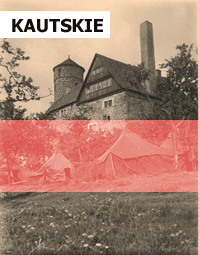Jean-Pierre Serre, P. Ion - Galois Cohomology / Corrected Secon
| Schrijver: | Jean-Pierre Serre, P. Ion |
|---|---|
| Titel: | Galois Cohomology / Corrected Second Printing |
| ISBN: | 9783540421924 |
| Taal: | Engels |
| Uitgever: | Springer-Verlag Berlin and Heidelberg GmbH & Co. KG |
| Bijzonderheden: | 2001, 212pp, Gebonden |
| Prijs: | € 10,00 (Excl. verzendkosten) |
| Meer info: |
als nieuw, hardcover
trefwoorden n mathematics, Galois cohomology is the study of the group cohomology of Galois modules, that is, the application of homological algebra to modules for Galois groups. A Galois group G associated to a field extension L/K acts in a natural way on some abelian groups, for example those constructed directly from L, but also through other Galois representations that may be derived by more abstract means. Galois cohomology accounts for the way in which taking Galois-invariant elements fails to be an exact functor. History The current theory of Galois cohomology came together around 1950, when it was realised that the Galois cohomology of ideal class groups in algebraic number theory was one way to formulate class field theory, at the time it was in the process of ridding itself of connections to L-functions. Galois cohomology makes no assumption that Galois groups are abelian groups, so this was a non-abelian theory. It was formulated abstractly as a theory of class formations. Two developments of the 1960s turned the position around. Firstly, Galois cohomology appeared as the foundational layer of étale cohomology theory (roughly speaking, the theory as it applies to zero-dimensional schemes). Secondly, non-abelian class field theory was launched as part of the Langlands philosophy. The earliest results identifiable as Galois cohomology had been known long before, in algebraic number theory and the arithmetic of elliptic curves. The normal basis theorem implies that the first cohomology group of the additive group of L will vanish; this is a result on general field extensions, but was known in some form to Richard Dedekind. The corresponding result for the multiplicative group is known as Hilbert's Theorem 90, and was known before 1900. Kummer theory was another such early part of the theory, giving a description of the connecting homomorphism coming from the m-th power map. In fact, for a while the multiplicative case of a 1-cocycle for groups that are not necessarily cyclic was formulated as the solubility of Noether's equations, named for Emmy Noether; they appear under this name in Emil Artin's treatment of Galois theory, and may have been folklore in the 1920s. The case of 2-cocycles for the multiplicative group is that of the Brauer group, and the implications seem to have been well known to algebraists of the 1930s. In another direction, that of torsors, these were already implicit in the infinite descent arguments of Fermat for elliptic curves. Numerous direct calculations were done, and the proof of the Mordell–Weil theorem had to proceed by some surrogate of a finiteness proof for a particular H1 group. The 'twisted' nature of objects over fields that are not algebraically closed, which are not isomorphic but become so over the algebraic closure, was also known in many cases linked to other algebraic groups (such as quadratic forms, simple algebras, Severi–Brauer varieties), in the 1930s, before the general theory arrived. The needs of number theory were in particular expressed by the requirement to have control of a local-global principle for Galois cohomology. This was formulated by means of results in class field theory, such as Hasse's norm theorem. In the case of elliptic curves, it led to the key definition of the Tate–Shafarevich group in the Selmer group, which is the obstruction to the success of a local-global principle. Despite its great importance, for example in the Birch and Swinnerton-Dyer conjecture, it proved very difficult to get any control of it, until results of Karl Rubin gave a way to show in some cases it was finite (a result generally believed, since its conjectural order was predicted by an L-function formula). The other major development of the theory, also involving John Tate was the Tate–Poitou duality result. Technically speaking, G may be a profinite group, in which case the definitions need to be adjusted to allow only continuous cochains. |

De verkoper zal binnen 3 werkdagen contact met u opnemen om de koop verder af te handelen.
Het huisnummer is ook opgegeven in het straat veld. Gelieve controleren of de velden straat en huisnummer correct zijn opgegeven.
Straat:
Nummer:
- Alle boeken zijn compleet en verkeren in normale antiquarische staat, tenzij anders beschreven. Kleine onvolkomenheden, zoals een ingeplakte ex-libris of een naam op het schutblad, zijn niet altijd vermeld
- U handelt deze order direct af met Kautskie
Deze verkoper is een particulier, dit heeft invloed op welke rechten voor u als koper ontbreken. Zo heeft u geen herroepingsrecht of conformiteitsrecht. Verder lezen. - Na uw bestelling ontvangen u en Kautskie een bevestiging per e-mail. In de e-mail staan de naam, adres, woonplaats en telefoonnummer van Kautskie vermeld
- De Koper betaalt de verzendkosten, tenzij anders overeen gekomen
- Kautskie kan betaling vooraf vragen
- Boekwinkeltjes.nl probeert Kopers en Verkopers tot elkaar te brengen. Boekwinkeltjes.nl is echter nimmer partij bij een overeenkomst die gesloten wordt tussen Koper en Verkoper door gebruikmaking van de site. Als u een geschil hebt met één of meer gebruikers, dient u dit zelf op te lossen. U vrijwaart Boekwinkeltjes.nl van enigerlei vorderingen, aanspraken op schadevergoeding en dergelijke, verband houdende met dergelijke geschillen.
Onthoud mijn gegevens
Registreer u vrijblijvend als koper!
Besteld, hoe nu verder?
De verkoper zal binnen 3 werkdagen contact met u opnemen om de koop verder af te handelen. Afhankelijk van uw locatie heeft u in de meeste gevallen binnen 2 dagen uw bestelling in huis.

